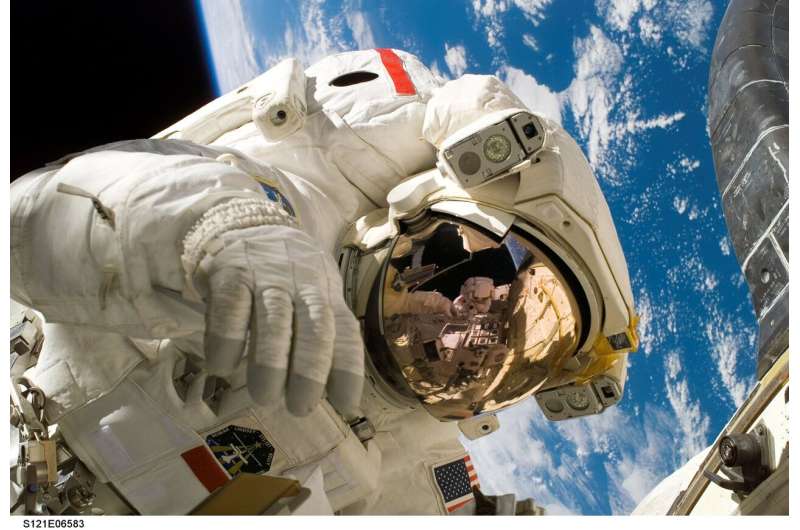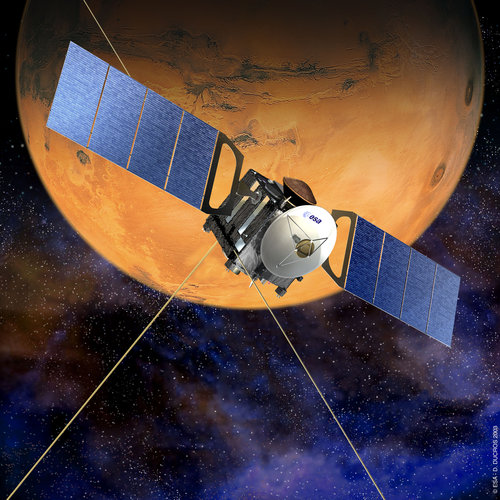
Copernical Team
Nicole weakens to Tropical Storm, threatens NASA launch
 Tropical Storm Nicole slowed after making landfall in the US state of Florida, meteorologists said Thursday, with high winds raising concerns that a long-delayed NASA rocket launch could be disrupted.
The storm, a rare occurrence this late in the year, sparked mandatory evacuation orders just weeks after Florida was battered by Hurricane Ian.
But just an hour after Nicole made landfall a
Tropical Storm Nicole slowed after making landfall in the US state of Florida, meteorologists said Thursday, with high winds raising concerns that a long-delayed NASA rocket launch could be disrupted.
The storm, a rare occurrence this late in the year, sparked mandatory evacuation orders just weeks after Florida was battered by Hurricane Ian.
But just an hour after Nicole made landfall a Splashdown is Just the Start for NASA Heat Shield Recovery Team
 After NASA's inflatable heat shield splashes down 500 miles off the coast of Hawaii, the Low-Earth Orbit Flight Test of an Inflatable Decelerator, or LOFTID, technology demonstration will be complete - but the mission's recovery team will still be hard at work.
LOFTID is scheduled to launch Nov. 10 aboard a United Launch Alliance (ULA) Atlas V as a secondary payload with National Oceanic a
After NASA's inflatable heat shield splashes down 500 miles off the coast of Hawaii, the Low-Earth Orbit Flight Test of an Inflatable Decelerator, or LOFTID, technology demonstration will be complete - but the mission's recovery team will still be hard at work.
LOFTID is scheduled to launch Nov. 10 aboard a United Launch Alliance (ULA) Atlas V as a secondary payload with National Oceanic a Rocket Lab announces launch window for inaugural Electron launch from Wallops Island
 Rocket Lab USA, Inc. (Nasdaq: RKLB) has announced it plans to launch its first Electron mission from Virginia during a launch window opening December 7 EST. The mission, named "Virginia is for Launch Lovers," will deploy satellites for leading radio frequency geospatial analytics provider HawkEye 360.
It will be Rocket Lab's first lift-off from Launch Complex 2 at Virginia Space's Mid-Atla
Rocket Lab USA, Inc. (Nasdaq: RKLB) has announced it plans to launch its first Electron mission from Virginia during a launch window opening December 7 EST. The mission, named "Virginia is for Launch Lovers," will deploy satellites for leading radio frequency geospatial analytics provider HawkEye 360.
It will be Rocket Lab's first lift-off from Launch Complex 2 at Virginia Space's Mid-Atla Nicole postpones NASA Artemis I mission until Nov. 16
 NASA has decided to re-schedule its Artemis 1 mission launch to Nov. 16, "pending safe conditions for employees to return to work."
The space agency is monitoring Tropical Storm Nicole Wednesday morning as it approaches the eastern coast of Florida.
"Adjusting the target launch date will allow the workforce to tend to the needs of their families and homes, and provide sufficient
NASA has decided to re-schedule its Artemis 1 mission launch to Nov. 16, "pending safe conditions for employees to return to work."
The space agency is monitoring Tropical Storm Nicole Wednesday morning as it approaches the eastern coast of Florida.
"Adjusting the target launch date will allow the workforce to tend to the needs of their families and homes, and provide sufficient Perseverance activities at Amalik outcrop
 On Sol 579 (October 6, 2022), Perseverance collected a sedimentary sample named "Mageik," the mission's 14th rock core, from the Amalik outcrop in the Enchanted Lake region at the base of the Jezero delta. Following collection of the Mageik sample, the rover processed a "witness tube."
The witness tubes do not collect samples but are opened near the sampling location to "witness" the marti
On Sol 579 (October 6, 2022), Perseverance collected a sedimentary sample named "Mageik," the mission's 14th rock core, from the Amalik outcrop in the Enchanted Lake region at the base of the Jezero delta. Following collection of the Mageik sample, the rover processed a "witness tube."
The witness tubes do not collect samples but are opened near the sampling location to "witness" the marti MAVEN observes Martian light show caused by major solar storm
 For the first time in its eight years orbiting Mars, NASA's MAVEN mission witnessed two different types of ultraviolet aurorae simultaneously, the result of solar storms that began on Aug. 27.
MAVEN - the Mars Atmosphere and Volatile Evolution mission - is the only asset at Mars able to observe the Sun's activity and the response of the thin Martian atmosphere at the same time. Real-time a
For the first time in its eight years orbiting Mars, NASA's MAVEN mission witnessed two different types of ultraviolet aurorae simultaneously, the result of solar storms that began on Aug. 27.
MAVEN - the Mars Atmosphere and Volatile Evolution mission - is the only asset at Mars able to observe the Sun's activity and the response of the thin Martian atmosphere at the same time. Real-time a Astra laying off 16% of workforce, honing focus on development
 California-based rocket company Astra will lay off 16% of its workforce, it announced with its quarterly financial report Tuesday.
The company reported a net loss of $199.1 million in the third quarter, including $133 million in impairment charges, and an adjusted EBITDA loss of $41.4 million. Its revenue was $2.8 million.
Reducing the workforce will help Astra save funds, a port
California-based rocket company Astra will lay off 16% of its workforce, it announced with its quarterly financial report Tuesday.
The company reported a net loss of $199.1 million in the third quarter, including $133 million in impairment charges, and an adjusted EBITDA loss of $41.4 million. Its revenue was $2.8 million.
Reducing the workforce will help Astra save funds, a port MDA selects Rocket Lab to supply satellite operations control center for the Globalstar constellation
 Rocket Lab USA, Inc (Nasdaq: RKLB) has been selected by MDA Ltd (TSX: MDA) to develop the Satellite Operations Control Center (SOCC) for Globalstar's (NYSE American: GSAT) growing constellation. MDA is the prime contractor for Globalstar's new Low Earth Orbit constellation.
The SOCC contract builds on the existing relationship between MDA, Rocket Lab, and Globalstar established in February
Rocket Lab USA, Inc (Nasdaq: RKLB) has been selected by MDA Ltd (TSX: MDA) to develop the Satellite Operations Control Center (SOCC) for Globalstar's (NYSE American: GSAT) growing constellation. MDA is the prime contractor for Globalstar's new Low Earth Orbit constellation.
The SOCC contract builds on the existing relationship between MDA, Rocket Lab, and Globalstar established in February Food science research could help astronauts eat well on future Mars missions

If space is the final frontier, it's food that will get us there in good shape, and UBC researchers are making sure that our food will be up to the task.
Dr. John Frostad, an assistant professor in chemical and biological engineering who studies the science of food, leads a team that is creating new ways of encapsulating omega-3 fatty acids so that they can go the distance.
Omega-3 is essential to mental sharpness. Even a couple of days without omega-3 in our diets may dull our brains and have us feeling less than our best. However, our bodies cannot produce it naturally so we must find it in the foods we eat, such as fish, flaxseed, or often by taking supplements.
"For astronauts and others on space missions, the difficult part is ensuring that omega-3 stays fresh and viable in whatever form—capsules or liquid—it is stored in," explains Dr. Frostad.
"The shelf life of most omega-3 capsules is around two years, but space missions can go for longer than that and they must be self-sufficient. You can't do a grocery run every couple of months.


